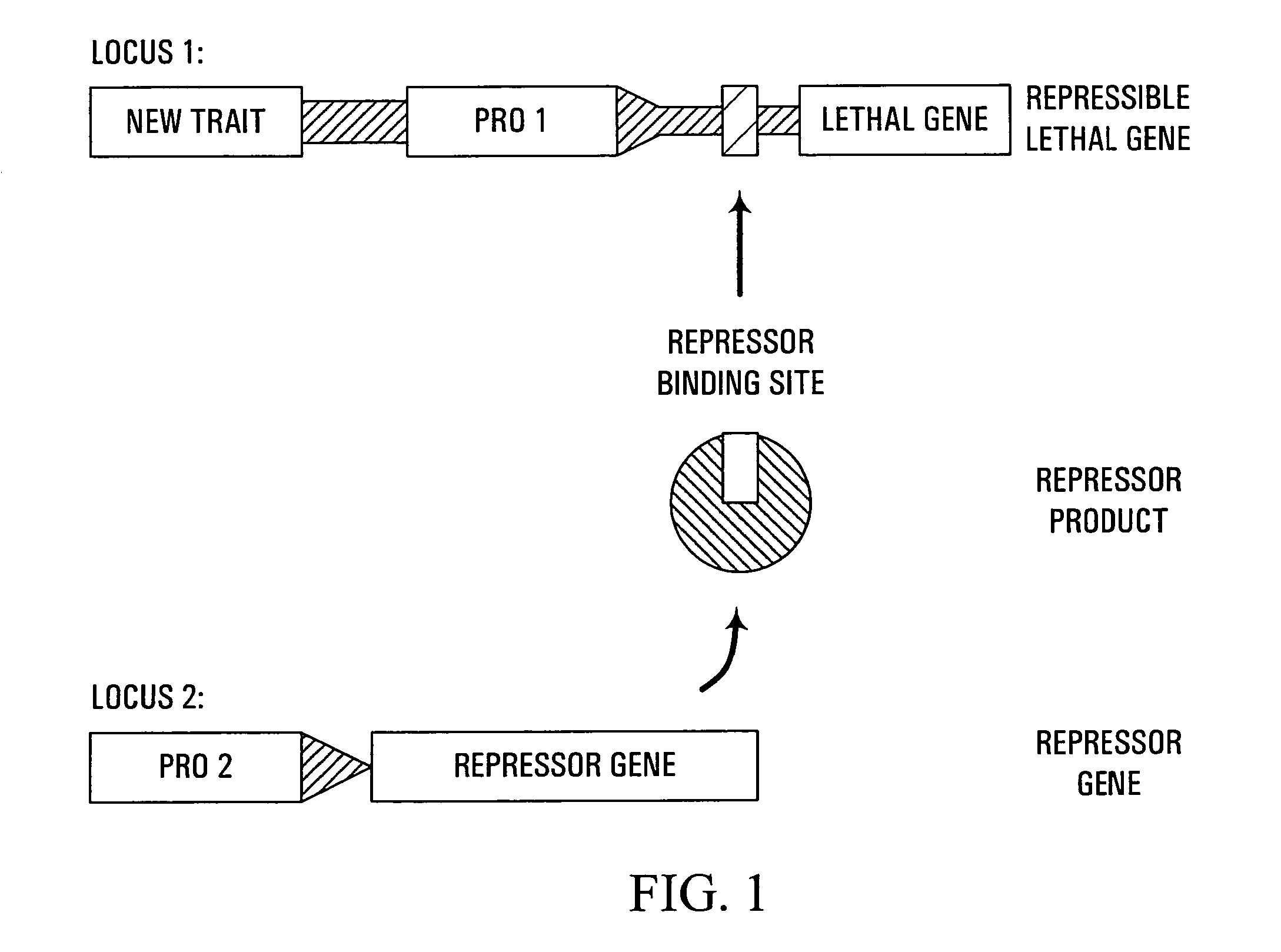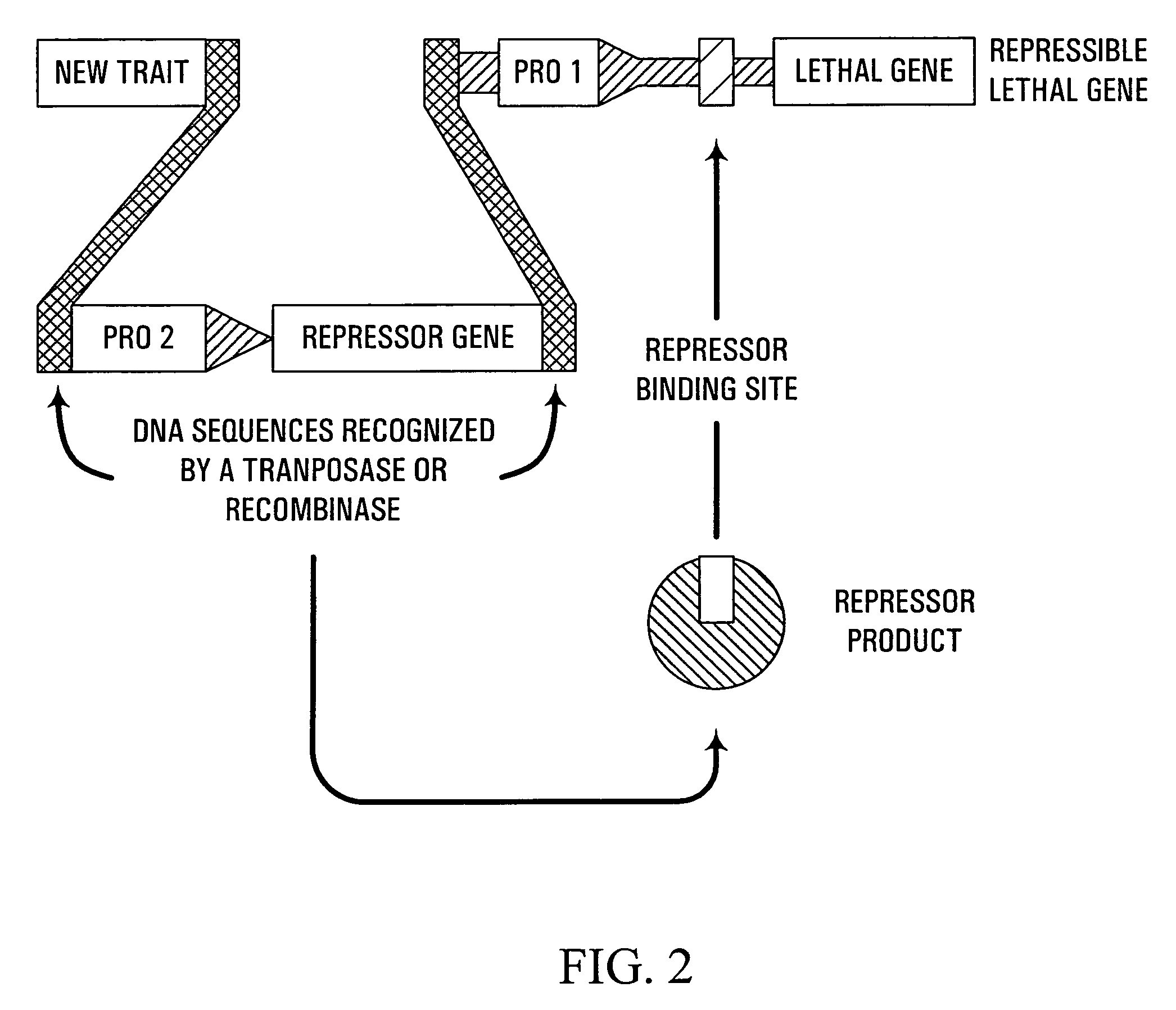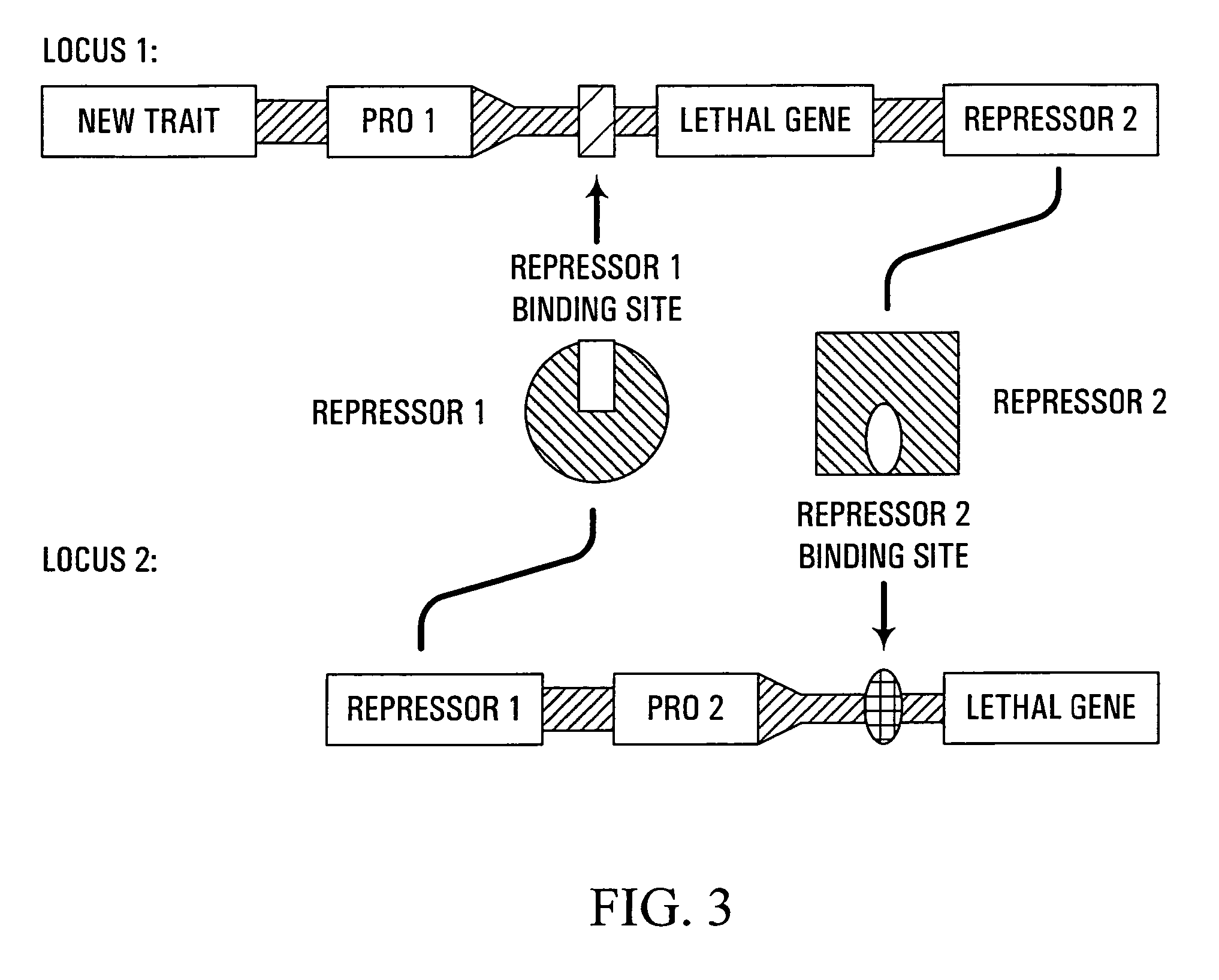Methods and genetic compositions to limit outcrossing and undesired gene flow in crop plants
a technology of crop plants and genetic compositions, applied in the field of methods and genetic compositions to limit outcrossing and undesired gene flow in crop plants, can solve the problems of inability to reduce the introduction of genes by methods, the risk of contamination among commercial productions of the same crop species, and the inability to provide the means for reducing the introduction of genes. the effect of limiting the spread and persistence of genes
- Summary
- Abstract
- Description
- Claims
- Application Information
AI Technical Summary
Benefits of technology
Problems solved by technology
Method used
Image
Examples
example 1
Isolation of Oncogene 1 and 2 from Agrobacterium Ti-plasmid pTil5955
[0181]To isolate the oncogenes, the following steps were employed. The subclones p101 and p202, detailed in U.S. Pat. No. 5,428,147 encompassing the DNA encoding oncogene 1 (p202) and oncogene 2 (p101) are used as a source of the genes. In order to isolate the genes, a combination of PCR to introduce convenient restriction sites and subcloning of native gene fragments is employed to derive oncogenes that can be conveniently inserted into plant transformation vectors.
[0182]To isolate a native oncogene 2, the following approach is used. The 5′ region, including the native promoter of oncogene 2 is isolated by PCR amplification of the plasmid p101 with the following primers:
[0183]
G2P1(SEQ ID NO:1)5′ ATAGCATGCTCTAGATGTTAGAAAAGATTCGTTTTTGTG 3′and,G2P2(SEQ ID NO:2)5′ ATACCATGGCGATCAATTTTTTTGGCGC 3′.
[0184]G2P1 contains a Sph 1 site (boldface) and a Xba I site (underlined) and corresponds to the complement of nucleotides 58...
example 2
Construction of a Phaseolin Promoter with a Bacterial Repressor Binding Site
[0197]In this example, the tetracycline (tet) operator DNA is introduced into the phaseolin promoter. In order to insert the tet operator sequence into the phaseolin promoter sequence, PCR is used to isolate the region of the promoter that corresponds the DNA sequence 5′ to the native TATA box and a synthetic DNA sequence containing three copies of the tet operator sequence. The TATA box is ligated to the PCR fragment of the promoter resulting in the formation of a reconstructed phaseolin promoter containing three copies of the tet operator sequence. The means by which this is accomplished is as follows and is shown in FIG. 8.
[0198]The promoter region of the phaseolin gene (described in: Slightom, J. L., Sun, S. M. and Hall, T. C., Proc. Natl. Acad. Sci. USA 80:1897-1901, 1983) is isolated by PCR using the vector pAGM 219, kindly supplied by Dr. G. Cardineau of Mycogen Plant Sciences, San Diego, Calif. The p...
example 3
Construction of a Plant Transformation Vector Comprising an Oncogene 1 Under the Control of a Modified Repressible Phaseolin Promoter Linked to an Active Oncogene 2.
[0208]In this example, formation of a plant transformation vector is described which comprises a repressible lethal gene activity resulting from the combined activity of two genes, oncogene 1 (placed under the control of the modified phaseolin promoter) and native oncogene 2. When expressed, the two oncogenes in this vector lead to the formation of excess IAA, killing plant cells in which the lethal gene activity is expressed. To construct this vector, the following steps are employed.
[0209]The plasmids pPHAStet1 and pG1 are digested with Cla 1 and the coding region for oncogene 1 is inserted into the Cla 1 site of pPHAStet1 to produce the vector pPG-1. The phaseolin terminator contained in the plasmid pAGM 219, comprising the nucleotide sequences starting at 36 bp downstream of the protein termination codon TGA comprisi...
PUM
| Property | Measurement | Unit |
|---|---|---|
| genetic compositions | aaaaa | aaaaa |
| fungal resistance | aaaaa | aaaaa |
| germplasm purity | aaaaa | aaaaa |
Abstract
Description
Claims
Application Information
 Login to View More
Login to View More - R&D
- Intellectual Property
- Life Sciences
- Materials
- Tech Scout
- Unparalleled Data Quality
- Higher Quality Content
- 60% Fewer Hallucinations
Browse by: Latest US Patents, China's latest patents, Technical Efficacy Thesaurus, Application Domain, Technology Topic, Popular Technical Reports.
© 2025 PatSnap. All rights reserved.Legal|Privacy policy|Modern Slavery Act Transparency Statement|Sitemap|About US| Contact US: help@patsnap.com



